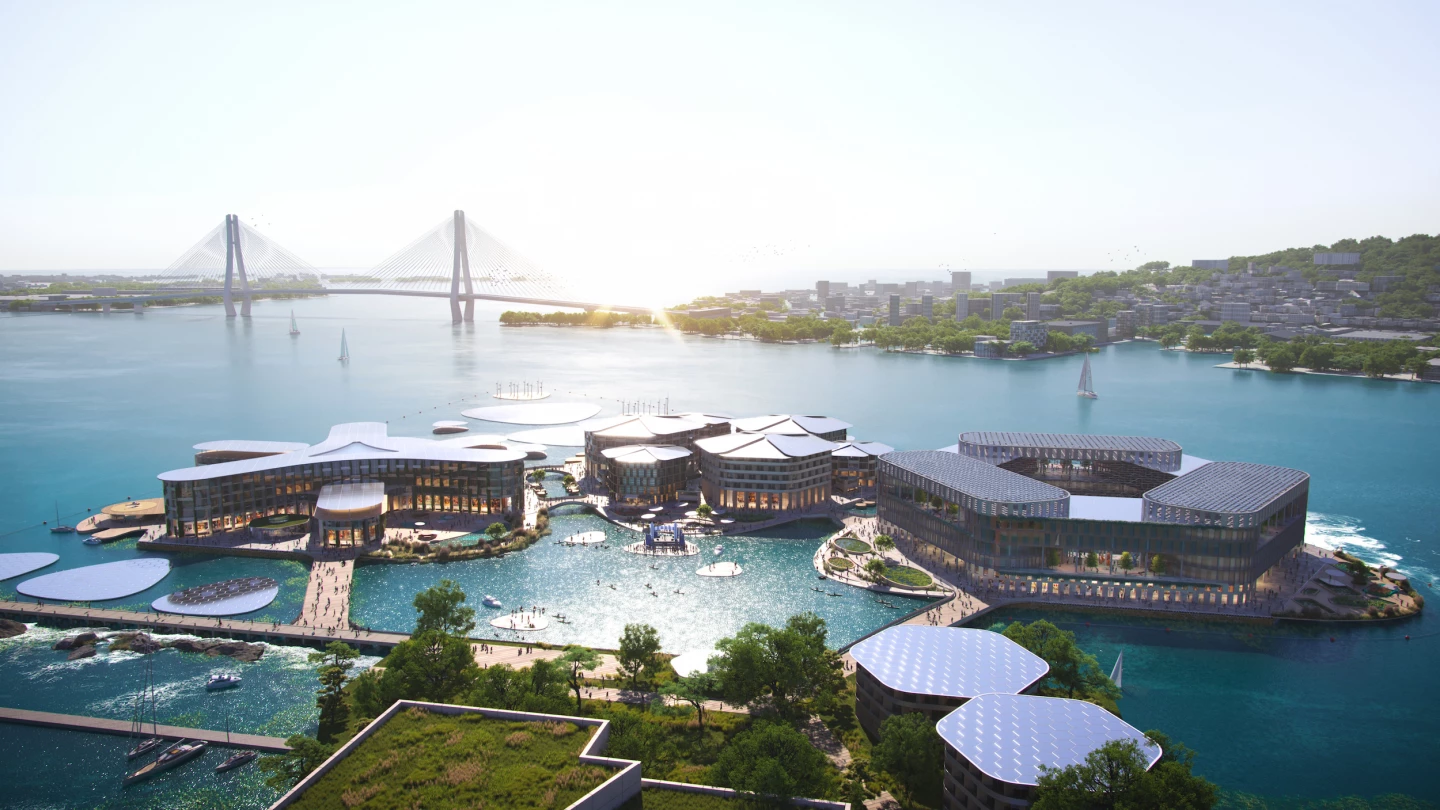As concerns about rising sea levels continue to grow, the idea of people living in climate-resilient and sustainable floating cities is beginning to gain traction. UN-Habitat, the Bjarke Ingels Group, SAMOO (Samsung Group), Oceanix and others have joined forces to research this further and plan to build a prototype floating city in South Korea.
The project, which involves too many firms to list in full, was first unveiled back in 2019 but has developed considerably since then. The initial prototype is named Oceanix Busan, due to its planned location off the coast of the South Korean city of Busan.
It will consist of three main floating island platforms that will connect to the nearby shore. It's expected to host up to 12,000 people, and the platforms will host housing, social areas with bars and cafes, as well as research areas. The prototype floating city could have the potential to grow up to 20 islands and many more people, though.
"Oceanix Busan is the world's first prototype of a resilient and sustainable floating community," said a press release from UN-Habitat, the United Nations Human Settlement Programme. "The interconnected neighborhoods total 6.3 hectares [15.5 acres] to accommodate a community of 12,000 people. Each neighborhood is designed to serve a specific purpose – living, research, and lodging. There are between 30,000 to 40,000 sq m [322,000 - 430,000] of mixed-use programs per neighborhood. The floating platforms connect to the land with link-span bridges framing the sheltered blue lagoon of floating recreation, art, and performance outposts."
The buildings will be largely constructed from sustainably sourced timber and situated to maximize passive ventilation. The entire development will be fully powered by photovoltaic panels, while greenhouses will be used to grow food and water usage will be minimized.
According to the Independent, the project is due to begin construction in 2023 and Oceanix has confirmed to us that the first phase should be completed by 2027. It's certainly an ambitious undertaking and it will be fascinating to see it progress.
Sources: Oceanix, UN-Habitat










